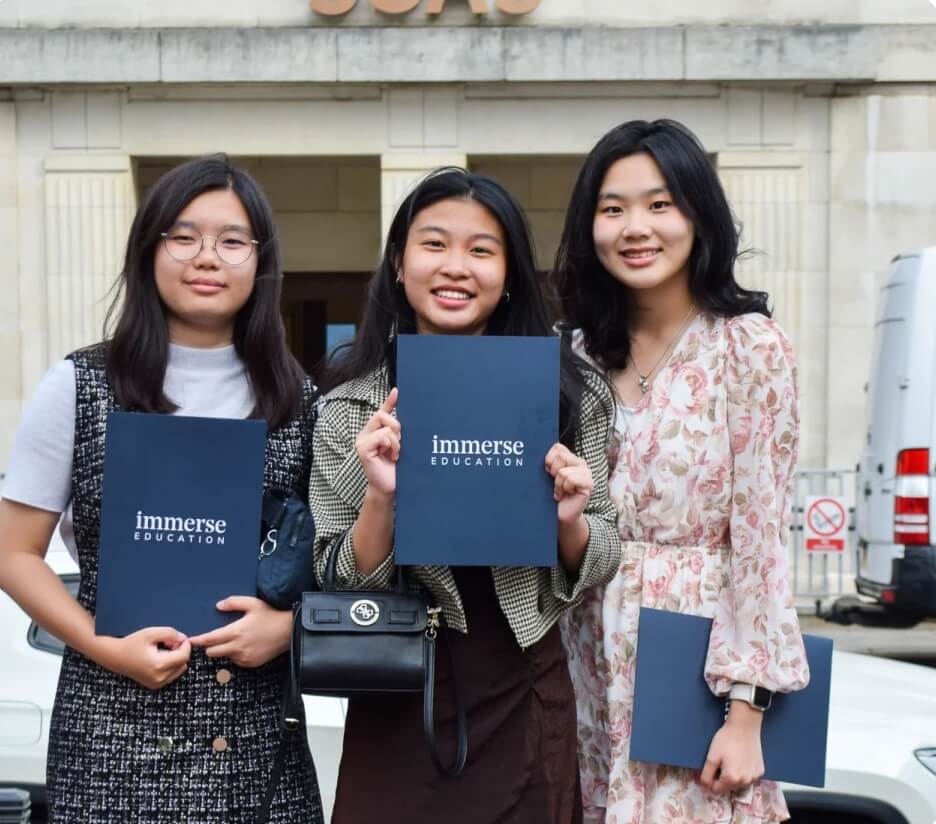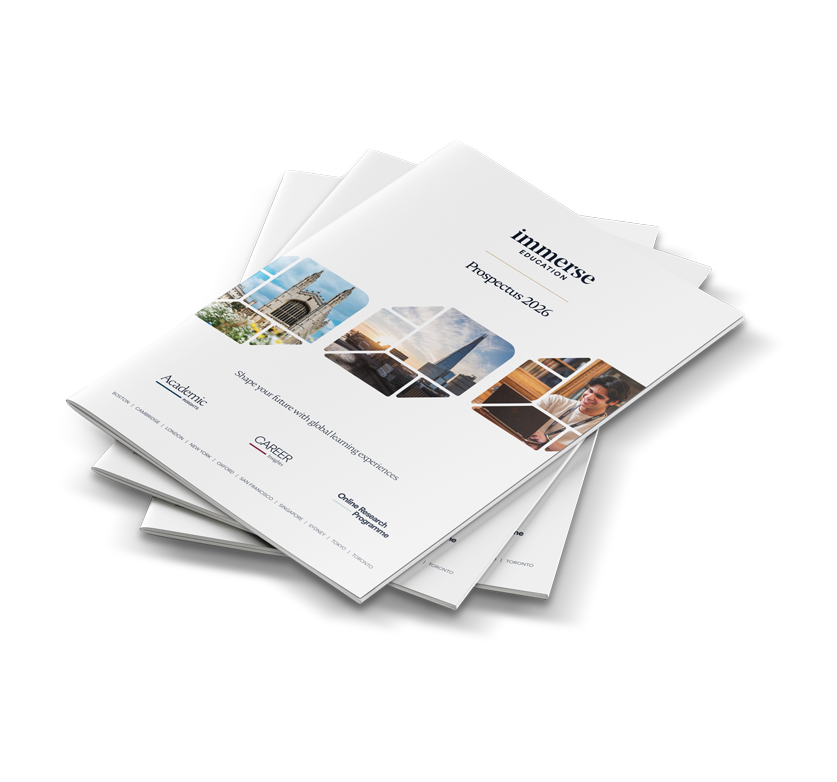Learning how to write a personal statement for university can feel daunting, but it’s your chance to show who you are beyond grades.
Universities use personal statements to understand your motivation, interests, and readiness for academic study.
For the 2026 entry, UCAS has introduced a new format where you answer three structured questions instead of writing one long essay. This approach helps you focus on your subject choice, preparation, and experiences.
This general guide applies to all subjects and will help you write a clear, confident, and authentic statement that captures your passion and potential.
What the Personal Statement Is For
Your personal statement is the part of your UCAS application that reveals who you are as a learner. It shows admissions tutors your academic interests, motivation, and suitability for the subject you want to study.
While your qualifications and references prove what you can achieve, your statement explains why you want to pursue this particular field and how you are prepared to do so.
The purpose of a personal statement is to:
- Connect your academic journey with your future goals.
- Show your intellectual curiosity and motivation to learn.
- Demonstrate how your studies and experiences have shaped your interest in the subject.
- Present evidence that you are ready for the challenges of university study.
- Communicate your enthusiasm for contributing to an academic community.
Your personal statement plays a unique role within your UCAS application. Predicted grades and references reveal your academic ability, but the statement gives context to those achievements.
It allows you to explain what has inspired you, how your thinking has developed, and why you are drawn to a particular discipline. It’s also your chance to show maturity and self-awareness, qualities that admissions tutors look for in students who will thrive in an independent learning environment.
If you’re still shaping your interests, exploring subjects beyond school can help. Attending lectures, reading widely, or joining our Oxford Summer School and Cambridge Summer School programme gives you fresh experiences to draw on when writing your statement.
How Reflection Makes a Stronger Personal Statement
Universities value reflection more than a list of achievements.
For example, two applicants might mention completing an Extended Project Qualification (EPQ). One simply states they did it, while the other reflects on what it taught them about research and critical thinking. The second approach is far stronger because it shows genuine learning and growth.
A personal statement should reveal the person behind the grades.
It gives tutors insight into how you think, what motivates you, and how your experiences have prepared you for academic life. In short, it transforms your application from a record of results into a story of progress, curiosity, and potential.
Key Changes to the UCAS Personal Statement (2026 Entry)
If you’re researching how to write a personal statement for university for 2026 entry, you’ll notice UCAS has introduced a new format that replaces the traditional single essay with three structured questions.
This shift aims to make the process more accessible and consistent, helping every applicant present their strengths clearly, regardless of writing style or background.
In the past, students wrote one 4,000-character statement covering every aspect of their application. Many found it difficult to know how to begin or what to prioritise, often struggling to balance academic discussion with personal experiences.
The new format introduces a more guided approach, reducing uncertainty and giving applicants a clearer structure to follow. The three questions are:
- Why do you want to study this course or subject?
- How have your qualifications and studies prepared you?
- What else have you done outside of education that supports your application?
Each response contributes to the same 4,000-character total, but applicants can decide how much space to dedicate to each section. This flexibility allows students to emphasise their strengths.
For example, someone with strong academic preparation might focus more on question two, while another with relevant work experience might develop question three in greater detail.
While the layout has changed, the core message remains the same: show your passion for learning, your readiness for university study, and your potential to succeed.
To make the most of the new structure:
- Treat each question as a focused section with a clear purpose.
- Avoid repetition; each answer should add something new.
- Balance personal insight with academic evidence.
- Plan early so your ideas flow naturally between the three responses.
How to Start a Personal Statement
When learning how to write a personal statement for university, the start often feels like the hardest part. Facing a blank page can seem daunting, but once you begin writing, your ideas will start to flow more naturally.
The key is not to wait for the perfect first sentence but to focus on what truly inspires you about your subject. The opening of your statement sets the tone for the rest of your application. It is your first opportunity to make a strong impression and show genuine enthusiasm for your chosen subject.
A great introduction does not need to be dramatic or overly formal. It just needs to sound like you: curious, motivated, and ready to learn.
Before you start writing, take a moment to reflect on what draws you to your subject. Think about when your interest first came alive. Was it during a lesson, a project, a conversation, or a personal experience? Ask yourself:
- What specific moment made me realise I enjoy this subject?
- What ideas or topics make me want to learn more?
- How has my curiosity grown through school, reading, or experience?
Write your answers freely. Do not worry about grammar or structure yet; just capture your thoughts. You will use these reflections to shape your opening.
Avoid tired openings such as “I have always wanted to study…” or “For as long as I can remember.” They do not tell the reader anything personal.
Instead, start with a moment that shows your curiosity in action.
Examples
“Watching a courtroom debate during a school visit made me realise how much I value clear reasoning and evidence, the foundations of studying law.”
Or something more reflective yet academic:
“When a line of poetry made my class fall silent, I became fascinated by how language can change the way people think. That moment sparked my passion for English literature.”
These openings work because they combine emotion and intellect. They show reflection, self-awareness, and a genuine connection to the subject, which are the qualities admissions tutors value most.
Keep your introduction short, around two or three sentences. Focus on purpose and sincerity rather than style. Admissions tutors are more interested in why you care about your subject than in how dramatic your first line sounds.
Join the Immerse Education 2025 Essay Competition
Follow the instructions to write and submit your best essay for a chance to be awarded a 100% scholarship.

Step-by-Step: How to Write It
Understanding how to write a personal statement for university takes planning and reflection. Breaking it into clear steps helps you stay focused and create something genuine and well-structured.
Step 1: Plan What to Include
Before you start writing, take time to plan what to include. A clear outline helps you stay focused and ensures your statement reflects both your academic achievements and personal growth.
Begin by listing what best shows your readiness for university study. Focus on three key areas:
- Academic achievements: Subjects, coursework, or projects that highlight your strengths or analytical ability.
- Super-curricular activities: Lectures, online courses, essay competitions, or podcasts that extend your classroom learning.
- Relevant experiences: Volunteering, work placements, or summer programmes that show initiative and curiosity.
To refine your list, ask yourself:
- Which achievements or experiences show my enthusiasm for this subject?
- How have I developed skills such as problem-solving, communication, or research?
- What experiences best demonstrate my motivation and readiness for independent study?
- How do these examples connect with the course I want to study?
If you’d like to gain more experience before applying, consider subject-focused opportunities such as our Oxford Summer School programmes, designed to help students explore university-level topics and develop academic confidence.
Once you have your ideas, organise them under the three UCAS 2026 questions.
This framework will help you balance your content and avoid repetition. You’ll see how each example supports your motivation and subject understanding.
By the end of this step, you should have a focused list of experiences that clearly demonstrate your readiness for university study and your enthusiasm for the subject.
Step 2: Write Your First Draft
Once you’ve planned what to include, use your notes to apply what you’ve learned about how to write a personal statement for university and shape your ideas into a first draft. This stage is about turning your notes into a structured, readable narrative that shows your motivation, preparation, and personality.
Start by focusing on structure. A well-organised personal statement usually follows three parts:
- Introduction: Explain why you want to study your chosen subject. Keep this section short but engaging, linking your interest to a specific experience or academic moment.
- Academic Core: This is the largest section. Discuss your studies, super-curricular activities, and relevant experiences that show how you’ve developed your knowledge and skills. Include examples of independent learning, critical thinking, or problem-solving that highlight your intellectual curiosity.
- Conclusion: Reflect briefly on how your experiences have prepared you for university and what you hope to gain from further study. End on a confident, forward-looking note.
When writing your draft, ask yourself:
- Does every paragraph connect to my chosen subject?
- Have I explained what I learned, not just what I did?
- Does my writing sound natural and sincere?
Don’t worry about making it perfect yet. Focus on expressing your ideas clearly and getting everything on the page. You can refine later. Write in your own voice, using plain, active language. Avoid overcomplicating your sentences or using words you wouldn’t say in real life.
If you’re unsure where to start, write the academic core first and return to the introduction and conclusion later. Many students find it easier once they’ve captured the main substance of their statement.
Step 3: Edit for Clarity, Tone, and Flow
After finishing your first draft, step back before editing. Read it aloud to check whether your ideas sound natural and easy to follow.
Aim for clarity in every sentence by removing repetition or vague phrases. Each paragraph should link smoothly to the next, creating a logical flow from introduction to conclusion.
When editing, focus on both clarity and tone. Your personal statement should sound confident, sincere, and focused on learning. Check that your writing:
- Flows logically: Each paragraph should build on the previous one without sudden jumps or repetition.
- Is clear and concise: Avoid filler words and make every sentence add value.
- Is professional but personal: Use language that feels natural while staying formal enough for an academic audience.
- Shows enthusiasm through reflection: Express passion by discussing what you have learned rather than using dramatic phrases.
- Feels balanced: Be confident in your strengths but open about your desire to grow and learn.
- Uses simple, direct phrasing: Avoid overly formal or complex wording that does not sound like you.
Step 4: Get Feedback and Refine
This stage is where your personal statement truly comes together. Once you have edited your draft for structure and clarity, share it with people who can give constructive, honest feedback.
A fresh perspective can help you see how your ideas sound to others and identify parts that might need more focus or personality.
Ask a tutor, careers adviser, or trusted friend to read it carefully and comment on:
- Clarity: Are your main points and motivations easy to understand?
- Flow: Does each paragraph connect naturally to the next?
- Tone: Does your writing sound confident, authentic, and appropriate for a university application?
- Specificity: Are your examples detailed enough to demonstrate real insight and reflection?
Once you have feedback, refine your statement in stages. Adjust any sentences that feel unclear or repetitive. Replace vague claims with specific examples that show what you learned and why it matters.
Read your personal statement several times with different goals in mind:
- First, as a student. Does it reflect your genuine academic motivation?
- Second, as an admissions tutor. Is it engaging, thoughtful, and easy to follow?
Your final version should read smoothly and show both enthusiasm and maturity. A well-refined personal statement feels polished without losing your natural voice.
Taking time to review, adjust, and perfect your wording will help you submit a piece that feels confident, focused, and entirely your own.
What to Include (and Avoid)
Admissions tutors read hundreds of statements each week, so learning how to write a personal statement for university that stands out for clarity, reflection, and authenticity is key.
They want to understand why you’re drawn to your subject and how your experiences have prepared you for university-level study. A successful statement balances enthusiasm with evidence, showing that your passion is grounded in genuine curiosity and achievement.
When planning what to include, think of your personal statement as evidence of three things: interest, understanding, and readiness. Everything you write should support at least one of these points.
What to Include:
- Academic engagement: Highlight specific topics, books, or projects that deepened your understanding of your chosen subject. Describe what interested you about them and how they shaped your thinking.
- Super-curricular exploration: Show how you’ve gone beyond classroom learning. Mention online courses, research projects, or public lectures that inspired new insights. Reflect briefly on what you learned from each experience.
- Relevant experience: Include placements, volunteering, or part-time jobs that helped you develop relevant skills. For instance, shadowing a professional, assisting in research, or leading a student society all demonstrate initiative and maturity.
- Reflection: Don’t just list achievements, interpret them. Reflection is one of the most important parts of how to write a personal statement for university, as it shows how each experience influenced your outlook or strengthened your academic curiosity.
- Transferable skills: Mention abilities like teamwork, analysis, communication, or problem-solving. Connect these to your studies so tutors see how they’ll benefit you in university life.
- Future goals: End by showing how your chosen course links to your future ambitions or areas of academic interest.
What to Avoid:
- Clichés: Phrases such as “I have always been passionate about…” or “From a young age…” are overused and add little meaning. Be specific about why you care about your subject instead.
- Irrelevant detail: Keep your focus on experiences that relate to your chosen subject or demonstrate transferable skills. Avoid personal anecdotes that don’t connect to your academic goals.
- Humour or exaggeration: A light, genuine tone is fine, but jokes or overstatements can seem insincere. Stick to facts and reflection.
- Copying examples: Admissions tutors can tell when a statement borrows from templates or online samples. Write in your own voice, even if it takes longer to get right.
- Rushing: Last-minute writing often leads to errors or repetition. Give yourself time to draft, reflect, and revise.
Do:
- Write with honesty and confidence.
- Link every example back to your course.
- Highlight growth, such as what you’ve learned and how it shaped you.
- Proofread carefully and ask for feedback.
Don’t:
- Include quotes or famous sayings to sound impressive.
- Try to cover every experience since depth is more valuable than quantity.
- Overuse adjectives or make broad claims about your abilities.
The 80/20 Rule for Personal Statements
When exploring how to write a personal statement for university, follow the 80/20 rule: around 80% should focus on academic and super-curricular experiences, while 20% highlights your personal qualities and extracurricular involvement.
This balance ensures your statement remains academic in focus while still reflecting the individual behind the achievements.
Universities care most about your intellectual curiosity, readiness for study, and subject engagement. That’s why the majority of your statement should centre on what you’ve learned, explored, and accomplished academically.
Admissions tutors want to see that you’ve gone beyond the classroom to develop your understanding of the subject and that you can think critically about what you’ve learned.
Here’s how to apply the 80/20 approach effectively:
The Academic 80%
- Coursework and research: Discuss essays, projects, or experiments that deepened your understanding. Describe what you found challenging and how you developed new ways of thinking.
- Super-curricular experiences: Mention extra learning, such as online lectures, taster courses, podcasts, or reading beyond your syllabus. Reflect briefly on what you discovered, for instance, how a particular article or debate changed your perspective.
- Subject-specific examples: Link your learning to real-world issues or academic questions. For example, an economics applicant might discuss how studying inflation trends helped them appreciate the complexity of global markets.
- Skills and attributes: Focus on academic skills like analysis, evaluation, writing, or data interpretation, and explain how you’ve strengthened them through study.
The Personal 20%
- Extracurriculars with relevance: Mention activities that build complementary skills, such as leadership, teamwork, or creativity. Sports, music, or volunteering can all fit if you show how they relate to your personal or academic development.
- Life experience: If you’ve faced challenges or developed resilience through personal experiences, you can mention these briefly to demonstrate maturity.
- Career insight: Explain how your wider experiences have shaped your ambitions or understanding of your future profession.
For example:
“Designing an independent research project on renewable energy introduced me to the challenges of translating theory into practical solutions. Experimenting with small-scale solar panels taught me the importance of precision and perseverance, especially when results didn’t match expectations.
Alongside this, volunteering with a local environmental group helped me see how public engagement and education can drive real change. Balancing data collection with community outreach strengthened both my analytical and communication skills, reinforcing my ambition to study environmental engineering at university.”
Remember, the goal is not to split your statement mechanically but to maintain the right emphasis. If an experience doesn’t connect to your subject, think carefully about whether it earns its place. Admissions tutors value insight and depth more than a long list of unrelated achievements.
A well-balanced statement following the 80/20 rule gives a full picture of who you are: a motivated student with genuine academic curiosity and the personal qualities to thrive in an independent learning environment.
Remember, there’s no single ‘perfect’ personal statement. What matters most is that it sounds genuine, focused, and true to you as a learner.
If you want to improve your writing skills for your personal statement, consider our Creative Writing programme at our Cambridge Summer School. It helps you build confidence, refine your academic voice, and learn to express your ideas with clarity and impact. These are valuable skills for crafting a strong university application.
Example Excerpts
When you study examples of effective writing, you’ll better understand how to write a personal statement for university that feels authentic and reflective.
Each section of your statement has a purpose: to introduce your interest, to demonstrate depth of understanding, and to leave a lasting impression.
Below are three short, anonymised examples that illustrate what strong writing looks like in practice.
1. A Strong Opening Line
“It wasn’t during lessons that I discovered my love for physics, but while watching raindrops race down a window. The smallest one, defying the odds, merged with another and changed direction entirely. I realised that what fascinates me isn’t just how the world works, but why small forces can create such powerful change.”
Why it works: This opening draws the reader in with a quiet, original image. It captures intellectual curiosity through observation, revealing both personality and insight. The metaphor of “small forces creating change” mirrors the nature of scientific exploration and human learning, making it deeply memorable and reflective.
2. A Good Analytical Paragraph
“When I studied migration patterns in geography, I expected statistics and maps. What I found instead was a story of resilience, shaped by policy, climate, and human hope. Analysing data taught me that numbers are never neutral; they tell human stories that demand empathy as much as logic. It was the first time I realised that real understanding lies where evidence meets emotion.”
Why it works: This paragraph combines analysis with reflection. It shows critical thinking, curiosity, and emotional intelligence without exaggeration. The shift from data to human meaning demonstrates mature insight, exactly what admissions tutors look for in academic writing. The phrasing feels natural yet profound, proving that intellect and empathy can coexist in strong academic thinkers.
3. A Concise, Reflective Conclusion
“The equations, essays, and experiments I’ve tackled so far have been more than assignments; they’ve been mirrors, revealing how I think, question, and persevere. I’m not just ready to study my subject. I’m ready to grow through it, to let learning change how I see the world and how I shape it in return.”
Why it works: This conclusion moves beyond summary to reflection. It connects academic experience with personal growth, showing that learning is both intellectual and transformative. The rhythm and phrasing give it emotional weight without being dramatic, and the final line ties curiosity to purpose, leaving a thoughtful, lasting impression on the reader.
How to Use These Examples Effectively:
- Notice how each example shows rather than tells. None of them simply state “I am passionate” or “I work hard.” Instead, they illustrate those qualities through real experiences.
- Each one is rooted in academic curiosity and reflection. That is what admissions tutors value most.
- You can use a similar structure in your own statement: a clear example, followed by reflection on what you learned or how it influenced your goals.
Final Checks and Tips
Before you submit your personal statement, take time to review it carefully. Proofreading is not just about spotting typos; it is about making sure your statement represents you at your best.
Small details can make a big difference in how polished and professional your application feels.
Start by reading your statement aloud. This helps you hear awkward phrasing, missing words, or sentences that sound too long. Reading aloud also gives you a sense of rhythm and flow, which should feel natural and easy to follow.
Check these essentials before submission:
- Spelling, punctuation, and grammar: Even one small mistake can distract from your message. Read slowly, or ask someone else to proofread with a fresh perspective.
- Character limit: UCAS allows a maximum of 4,000 characters, including spaces. Check your count carefully so your text fits neatly without last-minute cuts.
- Structure: Make sure your statement has a clear beginning, middle, and end. Each section should flow logically, guiding the reader through your academic interests and reflections.
- Relevance: Every point should connect to your chosen subject or the skills needed for university. If a sentence doesn’t add value, remove it.
Manage your timing effectively:
Start early so you can plan, write, and refine your statement in stages. Avoid rushing in the final week before the UCAS deadline.
Create a simple schedule that gives you time to gather feedback and edit without pressure. For example:
- Week 1: Brainstorm and plan.
- Week 2: Write your first draft.
- Week 3: Revise for clarity and structure.
- Week 4: Get feedback and make final adjustments.
Balance your workload:
Many students juggle A-level coursework, exams, and extracurricular activities alongside university applications.
To stay organised, set aside short, focused writing sessions. Working in smaller bursts can help you stay motivated and maintain a fresh perspective each time you return to your draft.
Finally, make sure your statement sounds authentic. It should feel like something only you could write. Admissions tutors can spot forced or copied writing easily, so keep your tone natural and honest.
Your final read-through should leave you feeling confident that your statement captures who you are: a motivated, reflective learner who is ready for the next step in your academic journey.
Conclusion
Knowing how to write a personal statement for university is a chance to define your story and show real enthusiasm for learning.
The most successful statements are planned early, reviewed carefully, and shaped through genuine reflection. Starting ahead of deadlines gives you time to refine your ideas and present your best self with confidence.
If you want to strengthen your application further, explore opportunities that deepen your subject understanding. Attending lectures, joining online courses, or taking part in our Oxford Summer School and Cambridge Summer School programmes can all help you build valuable experience and insight.
Begin now, stay curious, and let your statement reflect both your ambition and your potential to thrive at university.



















